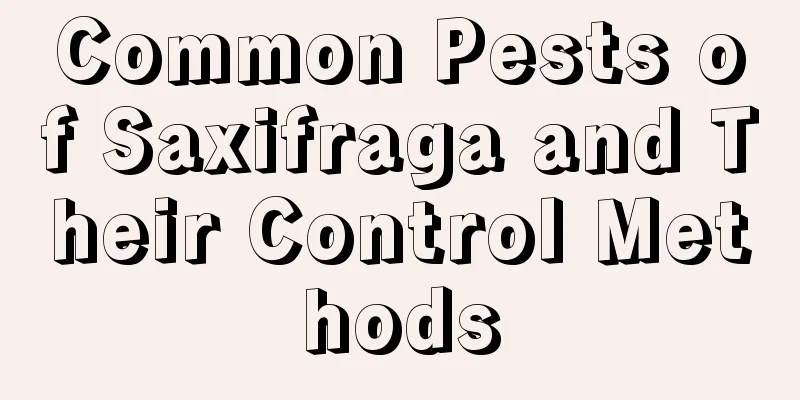Common Pests of Saxifraga and Their Control Methods

Common pests of saxifrage: mealybugsPest symptomsFemales and larvae cluster on the underside of leaves, sucking the sap. The male insects have wings and can fly. The leaves that have been sucked by the sucker look like they have spider webs. The leaves are shriveled and dry, with only some veins left, which looks very ugly. Mealybugs have white sticky powder on their bodies, which can contaminate the leaf surface and induce other diseases. Prevention and treatment methodsWhen purchasing, introducing, transporting, or giving away Saxifrage, careful inspections must be carried out to prevent the introduction of insects to prevent their spread. Choose the most suitable potting medium and disinfect it scientifically. For example, composting soil and other organic matter must be fully fermented and sterilized at high temperature or with chemicals to kill insect eggs or reproductive mothers. During the peak hatching period of nymphs, spray or root irrigate with 1000 to 1500 times dilution of 40% Suposu EC or 700 to 800 times dilution of 25% Aikas EC. Common pests of saxifrage: whitefliesPest symptomsAdult nymphs suck the juice of leaves, fruits and young branches. The affected leaves develop green yellow-white spots. As the damage worsens, the spots expand into patches, and then the entire leaf turns pale and falls off early. The flavor quality of the affected fruit is reduced, and young fruits often fall off when the damage is serious. Excreting honeydew can induce sooty mold disease. Prevention and treatment methodsEarly stage pests: When whiteflies occur sporadically, start spraying 1500 times diluted 20% cypermethrin wettable powder or 1000 times diluted 25% acaricide emulsifiable concentrate, 3000-4000 times diluted 2.5% pyrethroid emulsifiable concentrate, 2000-3000 times diluted 20% cypermethrin emulsifiable concentrate, 1500 times diluted 10% imidacloprid wettable powder, once every 10 days or so, and carry out prevention and control 2-3 times in a row. Pests during the growth period: spray 50% Daofengsan EC 1500-2000 times diluted, 80% DDT EC or 40% Dimethoate EC or 50% Phosphamidon EC, 50% Malathion EC, 50%
|
<<: Diseases and pests of Rhododendron sabdariffa and their control methods
>>: Diseases and Pests of American Mint and Their Control Methods
Recommend
How many years does it take for avocado to bear fruit?
Avocado Introduction Avocado likes light, warm an...
The difference between tuberose and Mirabilis jalapa
1. Different plant types Tuberose is a shrub of t...
How to plant Taiping flower
Taipinghua Introduction Taiping flower is a decid...
What is the best fertilizer for Begonia chinensis
Fertilization time of bamboo begonia Generally sp...
How to raise the roots of a bonsai plant
one. Repotting When taking out the entire Serissa...
How to propagate Cymbidium
Propagation of Cymbidium by Division For plants t...
How to cultivate ground lotus
Growing conditions of ground lotus The ground orc...
How to top and pinch cosmos
Topping When growing cosmos, topping and pinching...
Tips for sending flowers on New Year's Day
1. Cymbidium New Year's Day is the first day ...
The flowering of "Chlorophytum" means "good luck", let's see why the Chlorophytum in your home is not blooming?
If spider plants bloom, it means that the environ...
Causes and treatments of yellow leaves of pitcher plants
1. Improper watering Reason: Control the amount o...
How to propagate the Chinese lucky charm by division
The division method of Lucky Globe: Remove from t...
Is Bougainvillea Carmine blooming frequently? Shortcomings of Bougainvillea Carmine
Rouge Bougainvillea has relatively large flowers ...
The difference between golden amber and cactus
1. Difference between spheres The body of the gol...
Balcony too crowded? Teach you 4 tricks to double your space instantly and take care of growing flowers and hanging clothes!
Hanging Landscape The balcony, as a space for the...









